Are you curious about the history of Jews in China? If your answer is yes, you can’t miss our China Jewish Tour with Huangshan Visit, which will last 13 days and cover 6 cities, including Beijing, Xi’an, Kaifeng, Luoyang, Huangshan, and Shanghai. Except for some tourist attractions related to Jews in China, you will also visit some tourist attractions in world-famous cities in China, such as Terra Cotta Warriors and Horses Museum and Mount Huangshan. The main part of our tour is Jewish Tour with Beijing and Shanghai. In Beijing, you will start your Jewish Tour with the Forbidden City and the Great Wall. You can stroll along the Forbidden City, appreciating the beauty of Chinese classical architecture and learning more about the stories of emperors who lived here. You can also climb Badaling Great Wall, the great defense project in ancient China, enjoying its majesty. In Shanghai, you will go to Shanghai Jewish Refugees Museum to learn more about the stories behind these exhibits about Jews. You will also go to Huoshan Park, the ark of the Jews during World War II, to feel the mutual assistance between the people of Shanghai and the Jews. Besides, the must-sees in Xi’an, Kaifeng and Luoyang, and Huangshan are also included. For example, Terra Cotta Army in Xi’an, Nan Jiaojing Hutong in Kaifeng, Shaolin Temple in Luoyang and Mount Huangshan in Huangshan are all included in this tour. Don’t hesitate, just join us.

Today you will arrive in Beijing, the capital of China. Beijing is an ancient capital with a history of more than 3,000 years. Beijing, abbreviated as “Jing”, was called Yanjing and Peiping in the past. As of 2020, Beijing has 16 districts with a total area of 16,410.54 square kilometers. And according to the seventh nationwide census data, as of 2020, the permanent population of Beijing is 21,893,095. Beijing is one of the hubs of China’s railway network, and it also has two large airports, namely Beijing Capital International Airport and Beijing Daxing International Airport. As soon as you arrive at the airport, your local tour guide will be waiting for you at the lobby of the airport, holding your name sign. And then you will be transferred to the hotel. Our tour guide will accompany you on your tour in Beijing. And in the following days, if you have any questions, please ask our tour guide for help.
Today your Jewish tour in Beijing will begin. After eating a hearty breakfast, you will go to Tian’anmen Square in the center of Beijing. Tian’anmen Square is 880 meters long from north to south and 500 meters wide from east to west. It covers an area of 440,000 square meters and can accommodate 1 million people for grand gatherings. Along the central axis, there is a flag pole, Monument to the People’s Heroes, Chairman Mao Memorial Hall, and Zhengyang Gate Tower in the square from north to south. The major event here is the flag-raising ceremony, in which the Chinese national flag is raised with the sunrise every day.
Going through the Tian’anmen Gate Tower and continuing to the north, you will arrive at the Forbidden City (closed each Monday). Forbidden City is the imperial palace of the Ming (1368-1644) and Qing (1636-1912) Dynasties in China, located in the center of Beijing. It covers an area of about 720,000 square meters, with a construction area of about 150,000 square meters. Its construction started in 1406 and finished in 1420. In 2020, this world-famous royal palace celebrated its 600th birthday. During these six hundred years, it has witnessed the rise and fall of 24 emperors in the Ming and Qing Dynasties. Among these emperors, we have to talk about Emperor Puyi, the last emperor in history. During his life, Puyi ascended the throne three times and abdicated three times, with the shortest term lasting only 12 days. The first time he ascended the throne, Puyi was only three years old and could not even write yet. Can you imagine a country ruled by such a child who could not even dress himself? You will learn more interesting stories in the Forbidden City.
After lunch, you will visit the Temple of Heaven, which was built in 1420. In the Ming and Qing Dynasties, the Temple of Heaven was a place where emperors worshipped heaven and prayed for bumper harvests. In 112 BC, there was a custom of worshipping heaven during the winter solstice in ancient China. In the past, Chinese people believed that the emperor was the only one who can keep in touch with heaven. Before the ceremony of worshipping heaven, the emperor and related officials needed to fast or have a vegetarian diet. On that day, the emperor took a carriage from Fasting Palace, where emperors fast, to the Changing Clothes Platform in advance. Then in this place, the emperor changed clothes used to sacrifice and took off his shoes. Finally, before he went to the altar, he needed to wash his hands in a golden basin. Even the emperor can’t change any step of the ceremony. You will learn more from your knowledgeable guide during the tour.
Today your last stop is the Summer Palace, the royal garden of the Qing Dynasty. Located in the western suburbs of Beijing, 15 kilometers away from the downtown, the whole garden covers an area of 3.009 square kilometers. Summer Palace, together with Chengde Mountain Resort, Humble Administrator Garden, and Lingering Garden, is known as one of the four famous gardens in China. Except for beautiful scenery, there are also more than 40,000 cultural relics in the Summer Palace. The categories involved bronze ware, jade ware, porcelain, calligraphy, and painting. These categories almost cover all kinds of cultural relics in China. So, when you come to the Summer Palace, you are so lucky to visit various kinds of cultural relics.
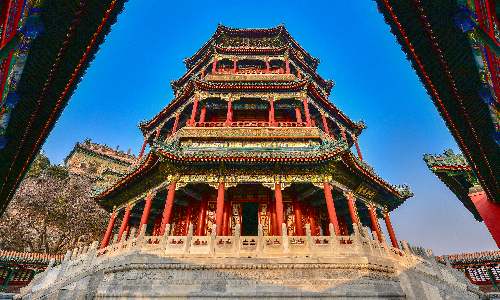
After breakfast, you will go to Hutongs in Beijing. Hutongs, which were inherited from the founding of the Yuan Dynasty (1271-1368), have a history of more than 700 years. When every hutong was formed, it was named according to different things. For example, based on the trees planted in hutongs, there are Willow Hutong, Zaolin Hutong, and Chunshu Hutong. Moreover, some names of hutongs can also be used to express people’s good wishes. So, people are always willing to use some auspicious words to name these hutongs. Like a museum of folk customs, hutongs record various social lives of people. You can take a rickshaw to visit hutongs, learning more about the life of Beijing residents.
After lunch, you will visit Badaling Great Wall in the afternoon, about 70 kilometers away from the downtown of Beijing. We will drive northwest for about 1.5 hours to go to Badaling Great Wall in Yanqing District. Badaling Great Wall was built in 1505, covering a length of more than 650 kilometers. It is a great defense project in ancient China. Badaling Great Wall is the earliest section that is open to tourists. It has received more than 130 million tourists both at home and abroad. More than 370 foreign leaders and other famous people around the world have visited Badaling Great Wall. For example, Thatcher (the 49th prime minister of England), Nixon (the 37th president of America), and Reagan (the 40th president of America) all visited Badaling Great Wall. Queen ElizabethⅡonce said that although she had been to many places in the world, the Great Wall was the most beautiful, which fully demonstrates the majesty of the Badaling Great Wall.
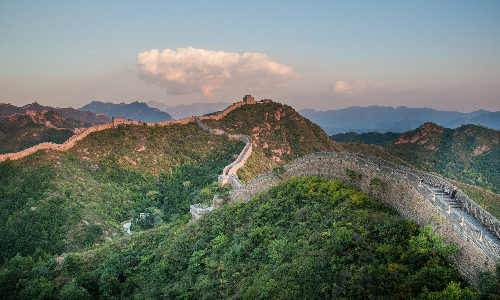
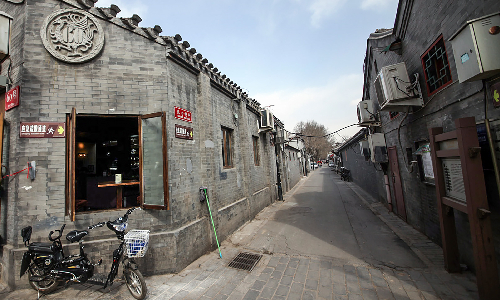
 Xi’an
Xi’an Today your tour in Beijing will come to an end. After breakfast, you will return to your hotel room to pack your luggage. And based on your flight, we will drive you to the airport in advance. You will take the estimated flight CA1223 12:00/14:05 to Xi’an, the capital city of Shaanxi Province. And our tour guide in Xi’an will be waiting for you at the airport, and then will accompany you to the hotel. As one of the four ancient capitals in the world, Xi’an is the capital city of 13 dynasties in ancient China. Tomorrow you will explore some beautiful tourist attractions in Xi’an.
Today, you will head northeast towards Terra Cotta Warriors and Horses Museum in Lintong District, more than 40 kilometers away from the downtown of Xi’an. We will drive for about 1 hour to get there. Terra Cotta Warriors and Horses Museum is one of the eight wonders of the world. As of January 2020, it has received more than 80 million visitors at home and abroad. Terra Cotta Warriors and Horses are a category of ancient tomb sculptures. Combined with painting and sculpture, the colors on the faces and clothes of warriors were still faintly visible when they were just unearthed. Moreover, based on their status, terra cotta warriors can be divided into soldiers and military officials. General soldiers do not wear crowns, while military officials wear crowns. And military officials are divided into low-level, intermediate-level, and high-level. The crowns of ordinary military officials are not the same as those of generals, and even their armors are different. From this aspect, we can see the ingenuity of terra cotta warriors and horses.
After lunch, you will visit Big Wild Goose Pagoda, a Buddhist pagoda in the Da Ci’en Temple. In 652, to preserve the scriptures and Buddha statues brought from Tintu (which referred to India and other countries on the Indian subcontinent), Xuanzang presided over the construction of the Big Wild Goose Pagoda. Xuanzang is a famous monk in the Tang Dynasty (618-907) and enjoys a high reputation in the history of Chinese Buddhism. And outside of the main gate of Da Ci'en Temple, there is a bronze statue of Xuanzang. This pagoda was originally five-story, and then it was added to nine-story. Later, the floor and height of this pagoda were changed several times. Finally, it has seven stories, with a total height of 64.517 meters. As the earliest and largest existing square brick pagoda in the Tang Dynasty, Big Wild Goose Pagoda is a landmark building that embodies the wisdom of the ancients.
After visiting Big Wild Goose Pagoda, you will go to Ancient City Wall in the center of Xi’an. This ancient city wall is the largest and best-preserved ancient city wall in China. It is 12 meters high and 13.74 kilometers long, with a top width of 12 to 14 meters and a bottom width of 15 to 18 meters. And there is a turret, which is used to observe the enemy’s situation, on each of the four corners of this wall. It is worth mentioning that only the southwest corner of this wall is round, and the other three are right-angled, which can be regarded as a major feature of the Ancient City Wall. When you come here, you can rent a bicycle on your own, going sightseeing on the Ancient City Wall.
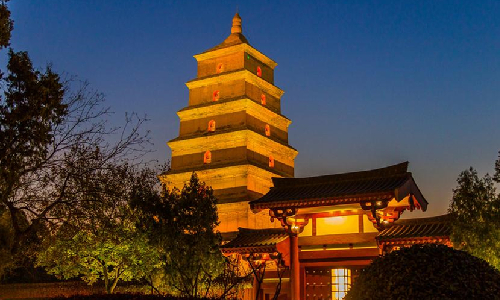
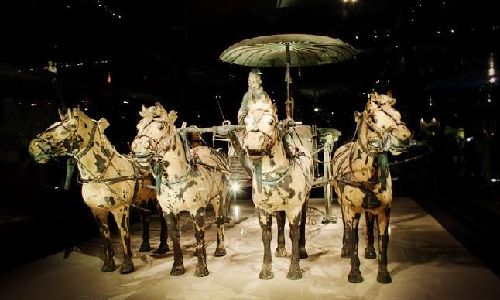
 Kaifeng
Kaifeng Your tour in Xi’an will be over today. And your next stop is Kaifeng, a prefecture-level city in Henan Province. After breakfast, you should pack your luggage and come to the lobby of the hotel on time. And you will be transferred to the train station to take the estimated train G3154 9:00/11:25. Based on the train timetable, our Xi’an tour guide will be waiting for you at the train station. Then you will have a hearty lunch.
After lunch, you will visit Kaifeng Museum (closed each Monday) in New District. With a total construction area of 54,286 square meters, Kaifeng Museum is a local comprehensive museum integrating exhibitions, collection, protection, and scientific research of cultural relics. In Kaifeng Museum, there are two stelae of Judaism, reflecting that some Jews lived in Kaifeng in the past. The first stela was built in 1489, with a height of 5 feet, clearly stating that Jews in Kaifeng believe in Judaism. Another was built in 1679, with a height of 7 feet. Two stelae demonstrate that Jews did live in Kaifeng in ancient times.
Then you will visit Nan Jiaojing Hutong in the east of Kaifeng. As early as the Northern Song Dynasty (960-1127), Jews came to Bianliang, which is called Kaifeng now. The Jews came to China with exquisite western clothes and jewelry, which amazed the then emperor. So, the emperor accepted that the Jews stayed in Bianliang. Then Jews in Kaifeng lived in a small hutong, today called Nan Jiaojing Hutong. This hutong preserves the footprints of Jews in Kaifeng. So, when it comes to a Jewish tour in Kaifeng, you cannot miss the Nan Jiaojing Hutong.
After the one-day tour in Kaifeng, we will drive you to the local hotel. What you need to do is to have a good rest. Tomorrow you will go to a new city to explore more interesting and beautiful places.
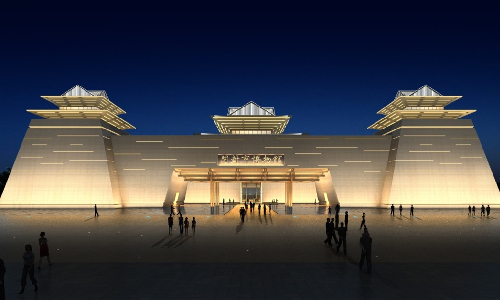
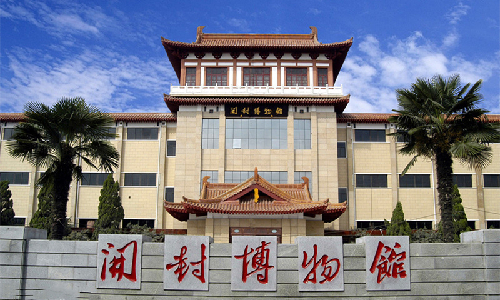
 Luoyang
Luoyang In the morning, we will go to Shaolin Temple in Dengfeng, about 156 kilometers away from Kaifeng. So, you should bring your baggage to the lobby of the hotel on time. And we will drive southwest for about 2 hours to visit Shaolin Temple. In the Northern Wei Dynasty (386-534), Shaolin Temple was built by Emperor Xiaowen (the seventh emperor of the Northern Wei Dynasty) in 495 to worship Buddhabhadra, who is a famous Indian monk revered by Emperor Xiaowen. As a world-famous Buddhist temple, its historical buildings, including Changzhu Yard, Chuzu Temple, and Pagoda Forest were listed as World Cultural Heritage by UNESCO in 2010.
When you come here, you will visit Pagoda Forest, about 250 meters west of Shaolin Temple. Pagoda Forest refers to the tombs of eminent monks of the past dynasties. After famous monks died, their ashes or bones were put in the underground palaces, on which pagodas were built to show their merit. Pagoda Forest in Shaolin Temple is the largest surviving pagoda forest in China, with 256 stone pagodas. Their shapes are of octagonal, hexagonal, square, circular, and conical. And its construction periods include Tang (618-907), Song, Yuan, Ming, and Qing Dynasties.
After visiting Pagoda Forest, you can’t miss Kungfu Show. As a comprehensive martial arts system, Shaolin Kungfu has various contents. According to the techniques, Kungfu can be divided into more than 100 kinds, such as boxing and swordsmanship. The Kungfu show in Shaolin Temple will last 30 minutes. You will watch Hard Qigong performance. Hard Qigong is to enhance the pain tolerance as well as the density and strength of cells of the exercised part through special breathing methods and physical resistance training. Before this show, you may have the opportunity to take photos with the abbot and disciples in Shaolin Temple. What’s more, if you’re lucky enough, you will be invited to watch the performance on the stage, and have interactions with these performers. That’s must be a special and interesting experience for you.
After visiting Shaolin Temple, we will head northwest towards Luoyang. You will be transferred to the hotel in Luoyang to take a good rest.
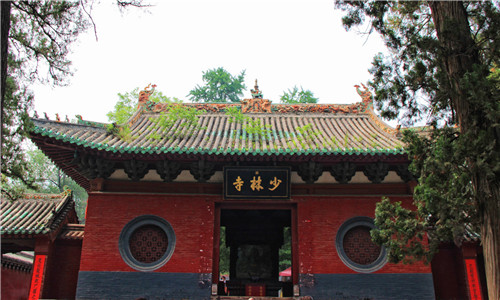
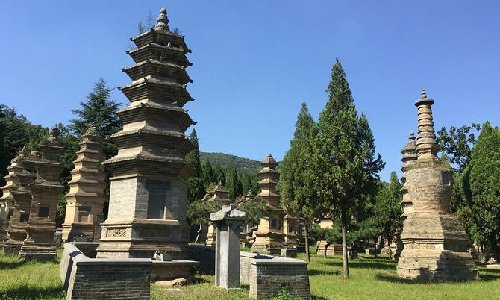
 Huangshan
Huangshan After breakfast, you will have plenty of time to pack your luggage. And you will be transferred to the airport in advance. You will take the estimated flight FM9559 12:20/13:50 to Huangshan City in southern Anhui Province. As soon as you arrive in Huangshan, you will find that our local tour guide will be waiting for you here. And then, you will be transferred to the hotel to have a good rest.
In the morning, we will drive northwest for about 1.5 hours to visit Hongcun Village in Yi County, Anhui Province. Hongcun Village is 62 kilometers away from Huangshan City. With a history of more than 900 years, Hongcun Village was built in the Southern Song Dynasty (1127-1279). The best Chinese movie of Oscar, Crouching Tiger, Hidden Dragon was filmed here. The buildings in this village are mainly residential houses and private gardens. And there are also public facilities such as academies and hospitals. With its unique scenery and ingenious village layout, Hongcun Village is the most representative of Hui-style architecture(a special architecture that exists in Zhejiang Province and Anhui Province). Except for appreciating the beautiful scenery, you can also buy some local embroideries.
After visiting Hongcun Village, we will return to Huangshan City. Then we will go to Tunxi Old Street in the central area of Tunxi District. Tunxi Old Street is the best-preserved and the most traditional pedestrian street with a flavor of the Ming and Qing Dynasties. On both sides of the main street, there are eighteen lanes. Over time, these lanes have been renamed several times. For example, there is a lane, which is called Lixin Lane. This lane, with a flagstone pavement, is 86 meters long and 1.4 meters wide. It is said that in the past, there were many bats in this lane. So, people called it Bat Lane. It was renamed Xinfeng Lane in 1966 and Lixin Lane in 1979. Until now, we still call it Lixin Lane.
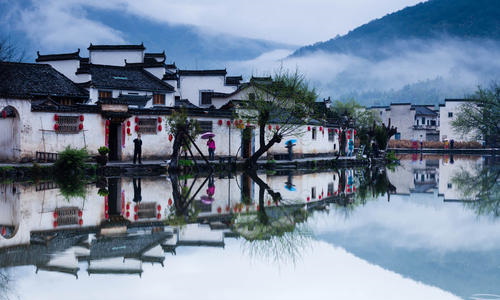
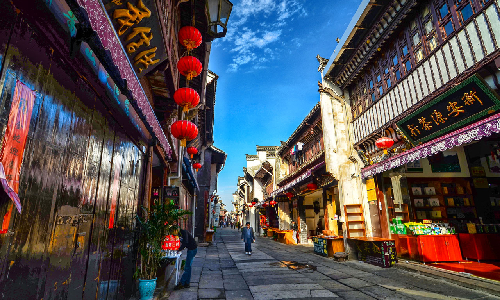
After breakfast, we will go to Mount Huangshan in the northwest of Huangshan City. It’s a one-hour drive from the city center to Mount Huangshan, and the whole distance is about 60 kilometers. Mount Huangshan, one of the top ten famous mountains in China, has 72 peaks. Its main peak, Lotus Peak, has an altitude of 1864 meters. Lotus Peak, Bright Summit, and Tiandu Peak are collectively known as the three main peaks of Mount Huangshan. When you visit Mount Huangshan, the Pine Greeting Guests is a must-see. The Pine Greeting Guests is the iconic landscape here and also the symbol of Anhui Province. The pine tree stands on the right side of the Yuping Tower, at an altitude of 1,670 meters. It is 9.91 meters high, with a diameter of 2.05 meters. Moreover, there are two large lateral branches with a length of 7.6 meters extending forward from the middle of its trunk. This pine looks like a hospitable host, with its arms outstretched, warmly welcoming guests at home and abroad to visit Mount Huangshan. When visitors come here, they become more interested and delighted to visit the mountain. Don’t forget to take photos here.
As soon as your tour in Mount Huangshan is over, you will return to the hotel in Huangshan City. And tomorrow, you will go to a new city to go sightseeing.
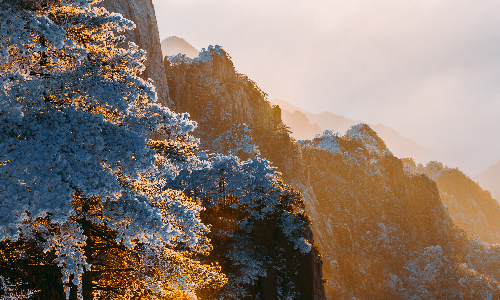
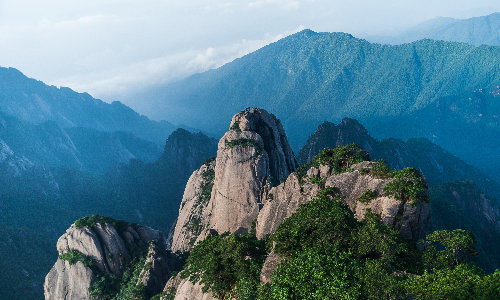
 Shanghai
Shanghai In the morning, our local tour guide will be waiting for you in the lobby of the hotel. Then you will be transferred to Huangshan North Railway Station. You will take the estimated train G7320 11:50/14:18 to Shanghai in eastern China. Our tour guide in Shanghai will pick you up at the train station. You will start your tour in Shanghai.
Today your first stop is The Bund in Huangpu District. The Bund is a Chinese historical and cultural district. As a both fashionable and vintage place, its distinctive architecture leaves an impression on people. There are 52 classical renaissance buildings with different styles on the Bund, which is known as International Architecture Exhibition Group. Without going abroad, you can visit various kinds of exotic buildings here.
After visiting The Bund, you will go to Nanjing Road, a commercial pedestrian street. After the opening of Shanghai to the world, Nanjing Road is the first commercial street established in Shanghai. With a length of 5.5 kilometers, it is a paradise for shoppers. It is a gathering place for department stores, with various goods. There are many time-honored food stores. For example, Shaowansheng, established in 1851, sells sugars, snacks, etc. Except for tasting its snacks, you can buy some Zuixie, whose ingredients are crab and rice wine. You will be surprised by the local food after tasting. You must have a try.
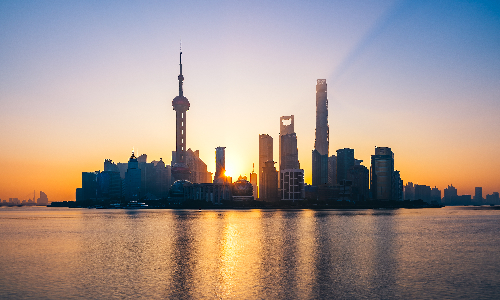
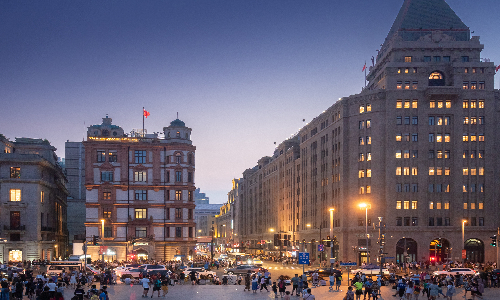
After breakfast, we will go to Shanghai Jewish Refugees Museum (closed each Monday) in Changyang Road. Shanghai Jewish Refugees Museum, which was built in 2007, includes the Moses Hall and a small exhibition hall nearby. Over the past ten years, after two expansions and upgrades, its area has exceeded 4,000 square meters, and the number of exhibits has also increased to nearly 1,000 from scratch. Among 1,000 exhibits on display, “Betty’s Wedding Dress” is impressive. Its owner, Betty, who is a Jewish girl, fled to Shanghai with her parents and sister when she was 9 years old. She met her husband in Shanghai and made this wedding dress in Nanjing Road. Betty cherished this wedding dress very much. Her two daughters wore the same dress with her when they got married. When Betty returned to Shanghai at the age of 83, she decided to donate this wedding dress to Shanghai Jewish Refugees Museum. Just as Betty said, this wedding dress belonged to Shanghai, and it should be returned to Shanghai to regain its luster.
Then you will visit Huoshan Park in Hongkou District. Huoshan Park was used for outdoor recreation as well as activities and gatherings. During World War II, tens of thousands of Jews came to Shanghai from Europe to escape the persecution of the Nazis. At that time, Huoshan Park became the main resting place for Jews in Shanghai. It still retains the Jewish refugee shelter that year, and it is now the office of the park. In appreciation of the help to Jewish refugees by the people of Shanghai, this building was renovated with the donations of the State of Israel and Israeli companies and in collaboration with Hongkou District People’s Government. Even though most of the Jews have already left Shanghai, they still remember Huoshan Park, saying that it was the ark of the Jews.
After lunch, you will visit Yu Garden (closed each Monday) in Huangpu District. Yu Garden, which was built in the Ming Dynasty, is the classical garden in southern China. The greatest treasure here is Exquisite Jade Rock, a Taihu Lake Stone. Exquisite Jade Rock, together with Guanyun Peak in Suzhou and Zhouyun Peak in Hangzhou, is known as the three most beautiful rocks. Exquisite Jade Rock is about 3 meters high and 1.5 meters wide, with a weight of 3 tons and a thickness of 80 centimeters. It has the characteristics of thinness, porosity, exquisiteness, and wrinkles. With these characteristics, it was favored by Chinese ancients. Now, you are lucky enough to visit this Taihu Lake Stone to explore the ancient culture of China.
Next, you will go to Shanghai Tower, a super high-rise landmark building located in Lujiazui Financial Area. Shanghai Tower, whose main building has 132 stories, has a total height of 632 meters. On its 118th floor stands a sightseeing hall, which is surrounded by large transparent glass curtain walls. As Shanghai Tower is equipped with the world’s fastest super-high-speed elevator, it only takes 55 seconds to reach the 546-meter-high sightseeing hall. When you come here, you can overlook Shanghai World Financial Center and Shanghai Jinmao Tower.
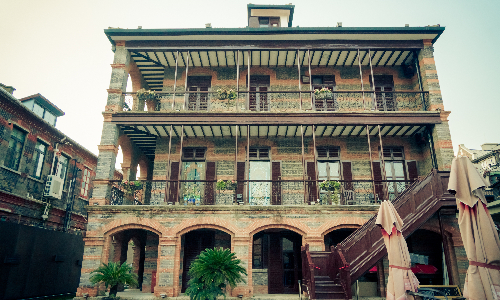
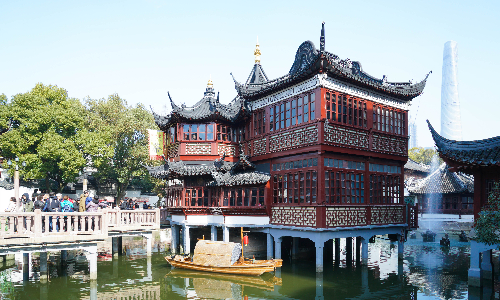
It’s time to say goodbye. Today your 13-day China Jewish Tour will be over. After breakfast, you will return to your room to pack your luggage. When you are ready, we will drive you to the airport. Our local tour guide will help you check in the luggage. Moreover, welcome to China again.
Editor: Deng Kaili
Proofreader: Summer Hou
| City | Five Star hotel list | Four Star hotel list |
|---|---|---|
| Beijing | Sunworld Dynasty Hotel Beijing Wangfujing | Sunworld Hotel Wangfujing |
| Xi'an | Tianyu Gloria Grand Hotel Xi'an | Sunworld Dynasty Hotel |
| Kaifeng | Sheraton Kaifeng | Pullman Kaifeng Jianye |
| Luoyang | Lee Royal Hotel Mudu | Xinyuan International Hotel |
| Huangshan | Huangshan International Hotel | Huangshan International Hotel |
| Shanghai | Ocean Hotel Shanghai | Courtyard by Marriott Shanghai Central |
 |
![]() About your child or infant, please contact us for a discounted price.
About your child or infant, please contact us for a discounted price.



We started with a few days in Beijing & ended in Shanghai, from where we visited the Forbidden City and Great Wall. In between we visited Terra Cotta Warriors Museum, Panda Base, Shanghai Disneyland.

We had a wonderful holiday in China which will remain long in the memory. China is a breathtakingly beautiful country full of splendid temples and palaces, mountains and rivers, peaceful rural scenes and bustling shopping streets.
 QUICK ENQUIRY
QUICK ENQUIRY